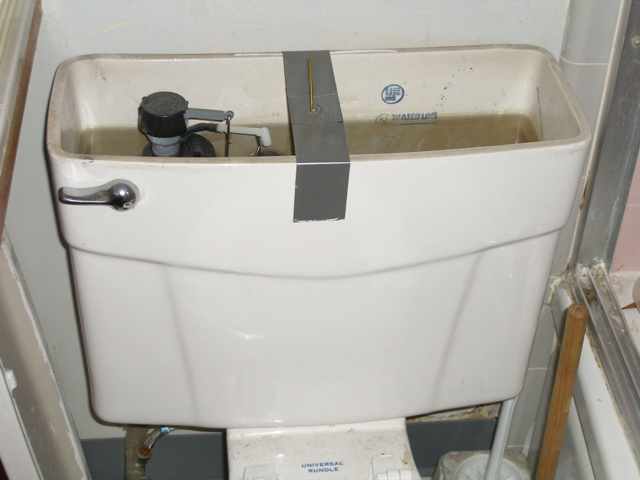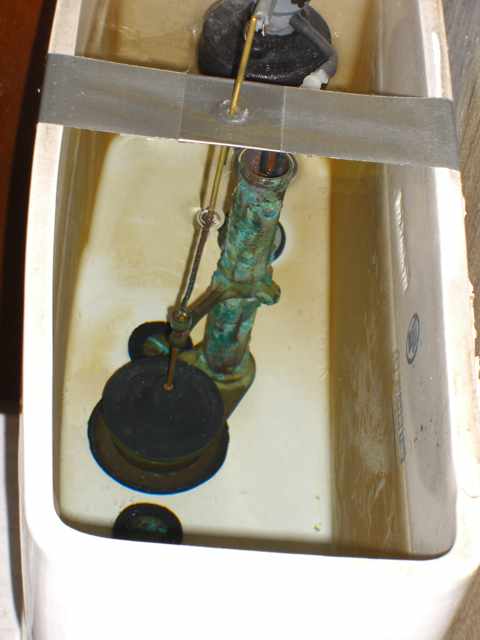
How you can cut your domestic water consumption in half by using this controllable toilet flushing system.

The first photo shows a front view of an open toilet water supply tank with a duck tape strap across the top of the tank.

The second photo shows an interior of the toilet refill tank and a brass rod running vertically from above the tank down through the water and into a floatable plunger valve. The floatable plunger valve is held in the drain pipe by the weight of the water above it. The rod is held in a vertical position by running it through a hole in a piece of adhesive duck tape strung from the front of the tank to the back of it. Lower down the rod runs through another guide attached to the filling assembly. The hole in the duck tape is surrounded and strengthened with a metal washer. The bottom of the rod is threaded and it is screwed into the plunger valve.
When the refill water tank is full the rod may be lifted by hand and release all of the water that is in the tank. It will flow out of the tank into the toilet bowl below. This operation is the normal full flush option and it performs exactly as it would had the typical handle on the front of the tank had been attached to the mechanism and depressed. The water saving alternative option is accomplished by pushing the rod vertically down, with the hand, at any time after it has been lifted up. When the rod is depressed the plunger valve is pushed into the drain pipe and the flow of water ceases immediately. When only liquid waste is being flushed away as little as one quarter of the water in the tank is necessary. Eight out of ten household usages of the toilet are for liquid waste disposal thus there is ample opportunity to save water. The assembly can be made to look much nicer by running the rod through the water tank lid. This can be done by boering a properly located hole through the top of the water tank lid. Use the duck tape method for a week or so first to make sure you are satisfied with its operation. These very simple assemblies are available by clicking contact below.
Liability disclaimer statement: These Probaways contain new and unique information that has been created, tested and retested by me alone. You must approach these findings and materials very carefully as your results may differ greatly from my experience and I can offer no recompensation of any kind for any injuries.
